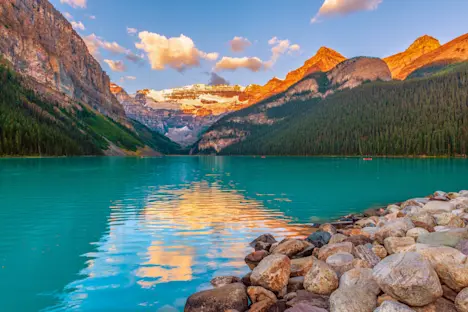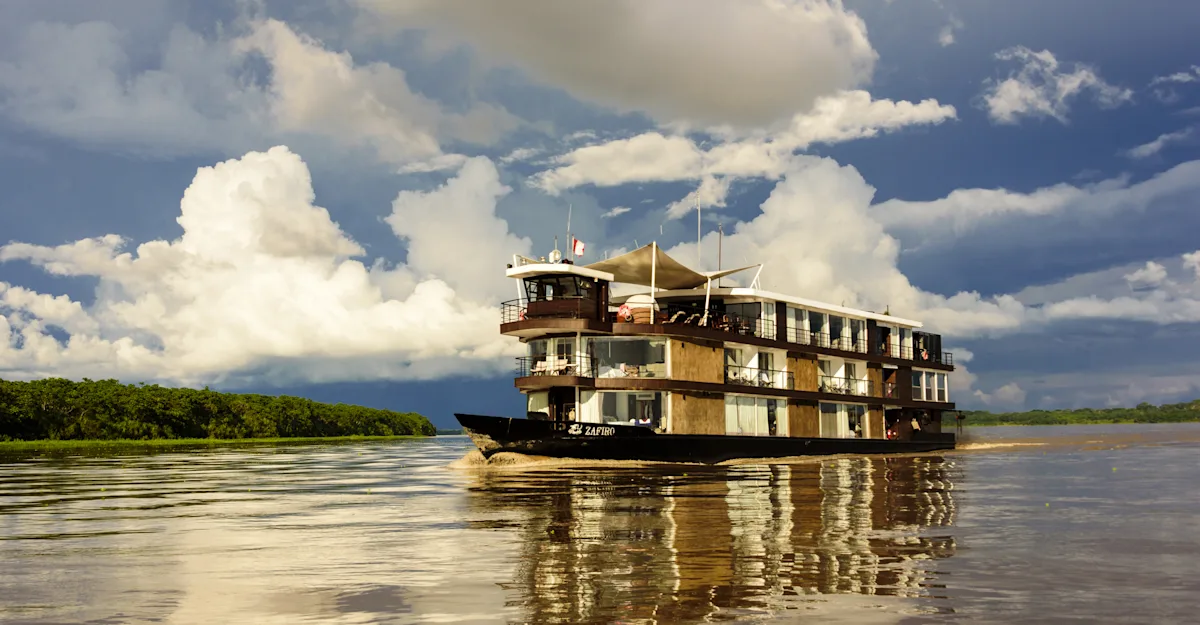
Know Before You Go: Amazon Tours


When Is the Best Time to Visit the Amazon Rainforest?
The Amazon is a year-round destination for wildlife lovers and nature travelers. While there are two primary seasons—wet and dry—each offers its own advantages. Wildlife is active throughout the year, and Peru’s Pacaya Samiria National Reserve is one of the best places to experience consistent wildlife sightings in any month. Understanding the seasonal differences can help tailor your Amazon adventure to your specific interests and travel style.
What’s the Difference Between the Amazon’s Wet and Dry Seasons?
The wet season (December to May) brings high water levels that allow small boats to navigate deep into the flooded forest, accessing otherwise unreachable habitats. The dry season (June to November) exposes more riverbanks and trails, allowing for increased forest walks and shoreline wildlife viewing.
Despite the seasonal divide, rainfall is common year-round due to the Amazon’s equatorial climate. Even in the dry season, expect humidity, afternoon showers and vibrant greenery. Both seasons support incredible biodiversity and exploration.
Feature | Wet Season (Dec–May) | Dry Season (June–Nov) |
|---|---|---|
Rainfall | Monthly average of 8–12 inches of rain with daily downpours | Monthly average of 3–6 inches of rain with occasional showers |
River Levels | Water levels rise, flooding forests and expanding access | Water levels recede, exposing sandbars and riverbanks |
Skiff Access | Increased access to remote tributaries via small boats | Limited access to flooded channels, more shoreline cruising |
Hiking Opportunities | Some trails may be too wet or flooded to navigate | Easier access to trails and more opportunities to walk |
Bird Activity | Nesting season for many birds | More raptor and wader sightings along river edges |
Temperature | Hot and humid with average daytime highs reaching up to 93°F | Hot and humid with average daytime temperatures around 86–90°F |
Photography Conditions | Lush greenery and atmospheric mist | Clearer skies and more light for landscape shots |
What Is the Weather Like During an Amazon River Cruise?
Travelers should prepare for hot, humid and wet conditions year-round. Daytime highs often reach 90–93°F, with high humidity. Afternoon showers are common—especially during the wet season—but they’re usually brief and don’t disrupt daily activities. Despite the tropical environment, guests enjoy cool, comfortable spaces aboard a luxury riverboat. Air-conditioned cabins and lounges, gourmet meals and attentive staff ensure a relaxing experience between outings.
What to pack for comfort:
Lightweight, breathable, quick-dry clothing
Waterproof rain jacket or poncho
Moisture-wicking socks and base layers
Insect repellent and sun protection
Rubber boots (provided on most Nat Hab trips)
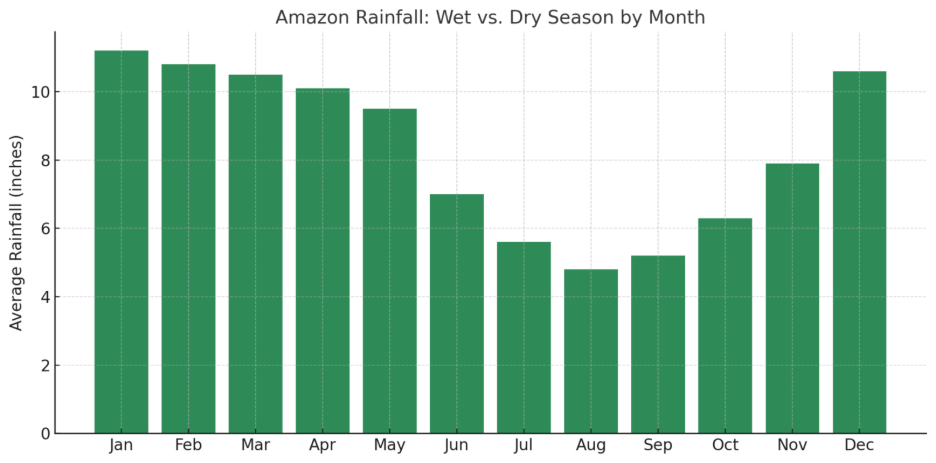
Can I Travel to the Amazon During the Rainy Season?
Yes — and many travelers consider the rainy season in the Amazon one of the best times to visit. From December through May (depending on region), rivers rise and flood the rainforest, creating a unique high-water season ideal for Amazon river cruises and wildlife viewing. During this period, you can explore deeper into the jungle by skiff or canoe, gliding through flooded forests rich with life. While rainfall is more frequent, it nourishes the landscape, bringing out vibrant greens, colorful blooms and abundant wildlife. Top reasons to visit the Amazon in the rainy season:
Lush vegetation and brilliant tropical flowers
High-water access to remote rainforest areas
Exceptional birdwatching and wildlife sightings
Cooler temperatures and fewer insects in some regions
Whether you’re joining an Amazon River expedition, a Peruvian Amazon lodge stay, or a Brazilian jungle adventure, the rainy season reveals a side of the rainforest few travelers experience.
Are There Fewer Bugs During Certain Months?
The Amazon is home to an incredible diversity of insects year-round, but their activity can vary with rainfall, humidity and water levels. Generally, travelers notice fewer mosquitoes and biting insects during the dry season, when riverbanks are more exposed and humidity is slightly lower. That said, the rainforest is always an active ecosystem — and with the right preparation, you can travel comfortably in any season. Many visitors are surprised by how manageable insects are when following basic protection steps.
Bug-Smart Travel Tips for the Amazon:
Wear lightweight long sleeves and pants to minimize exposed skin
Apply insect repellent containing DEET or a trusted natural alternative like lemon eucalyptus oil
Avoid bright yellow clothing, which can attract bees and wasps
Choose screened or air-conditioned lodging for restful nights
Whether you’re joining an Amazon river cruise, lodge-based adventure or guided jungle trek, these precautions ensure a more comfortable and enjoyable rainforest experience.
Amazon Tours
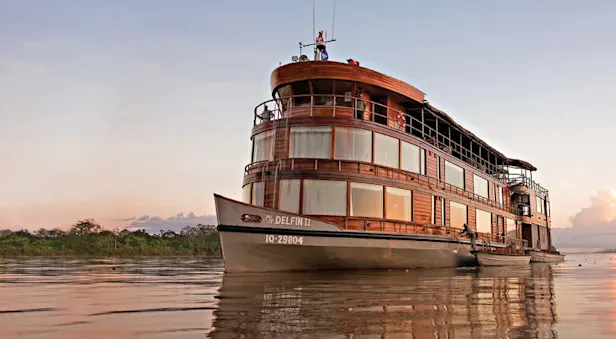
The Great Amazon River Expedition
Encounter rainforest wildlife from monkeys to macaws as our deluxe riverboat follows more than 400 miles of the Peruvian Amazon and its main tributaries to explore the river's remote headwaters.
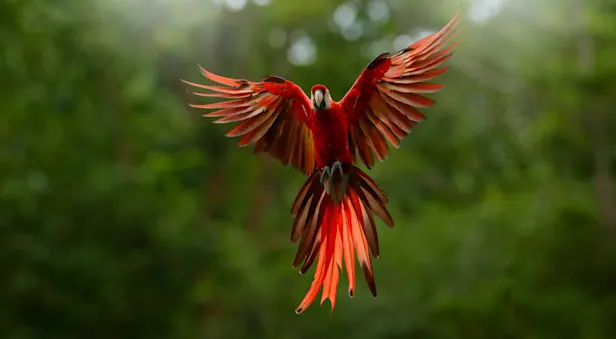
Discover Amazon & Machu Picchu
A spectacular combination of nature, history and culture awaits on this jungle adventure to the famed Lost City of the Incas and the heart of the Amazon rainforest, teeming with wildlife.






